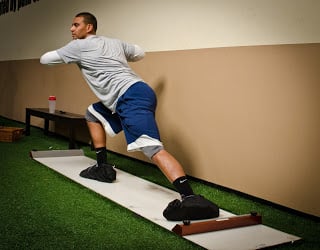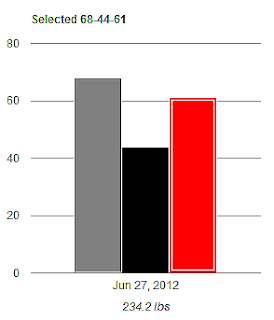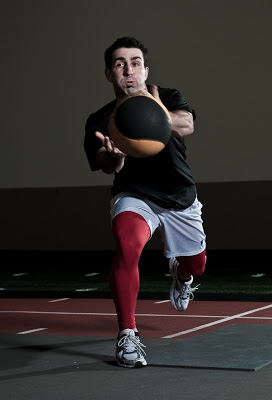
“As soon as I got out there I felt a strange relationship with the pitcher’s mound. It was as if I’d been born out there. Pitching just felt like the most natural thing in the world.” Babe Ruth
Interesting that Babe Ruth just happened to be good at hitting home runs as well, like he was destined to be a rotational athlete, a tornado of force. While the skills and precise angles differ between hitting and pitching, the two movements are not very different from a generic movement sequence of rotation.
Unlike the linear athletic Movement Signature we discussed last week, rotational athletes initiate a movement more forcefully, but a relaxation period in the middle of movement allows these athlete to behave like whips.

As discussed last week, linear motion is movement along a straight line, but rotational motion, also called angular, is movement about an axis of rotation. So a major differentiating factor is that rotational success often involves little displacement, you generally do not move a large distance forward.
But do not confuse the lack of displacement for lack of power. Large amounts of force are transmitted into the ground initially (LOAD) to start the movement, and large amounts are applied again to finish (DRIVE). Classic position examples include, but not limited to, golfers, quarterbacks, and baseball players.
So the major identifying factors from a Movement Signature are a low EXPLODE, relative to high LOAD and DRIVE, shown to the right. Like all athletic Movement Signatures, the low explode is only a small amount lower than the other two, allowing both an efficient energy transfer and a lower injury risk due to minimal imbalance. This lower EXPLODE allows the hip and shoulder dissociation to create a lag of the upper body, and thus a whip.

These athletes are highly skilled, performing movements with smooth, albeit longer, transitions. This longer time frame is foundational; an athlete’s loss of energy in transition (EXPLODE) also requires a higher awareness of when and how to regain this connection with the ground to finish (DRIVE).
A 2012 study actually echoes these training observations, finding a negative correlation between time to peak force and higher ball velocity (i.e. quicker means slower pitches). The authors found that these collegiate baseball players who produced the highest braking forces threw the ball harder. Previous studies on elite pitchers agree, adding the major component is vertical, otherwise you would fall over.
The genetics of such individuals tends to be more endomorph; an athlete tends to have more body fat. It is not uncommon to see successful golfers, pitchers, and quarterbacks to have success in their sport, despite a higher body fat composition. Their roundness often cause assumptions of their lack of athleticism, explosiveness, and even work ethic. If anyone has seen Ben Roethlisberger play, none of these stereotypes apply.
Probably half by philosophic training bias and half due to our large population of baseball/quarterbacks/volleyball, our training tends to gravitate towards this Movement Signature. We feel and emphasize the importance of the lower body in initiating and finishing movements. Such a high quality emphasis often requires more time to complete a given exercise. Quick, repetitive movements are saved for their sport practice/competitions, or more redundant activities that do not require coaching expertise (speed ladders, conditioning, etc.).
The EXPLODE variable is most correlated with trunk stability and upper body strength, so we also focus on dissociating the upper body through more muscle release, mobility, and rotational skill work. Luckily, we have objective Movement Signatures and software to monitor changes for greater emphasis on upper body in-house.
So the most successful rotational athletes
Create and finish their force production, at the expense of a lower trunk stiffness.
A softer body found in endomorphs seem to support such relaxation and lower stability
Build either end of the rotational signature by squats (LOAD) or split squats (DRIVE)
Guido JA Jr, Werner SL. Lower-extremity ground reaction forces in collegiate baseball pitchers. J Strength Cond Res. 2012 Jul;26(7):1782-5.